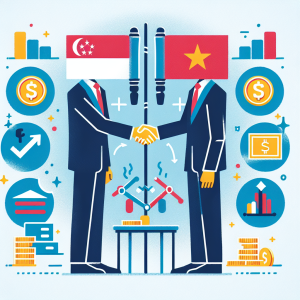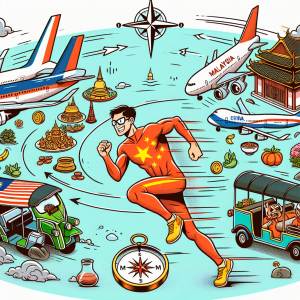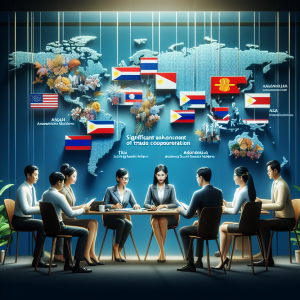Singapore’s Economic Landscape Amidst US-China Trade Tensions
As the US-China trade war continues to escalate, analysts warn that Singapore is likely to be “caught in the crossfire.” The ongoing economic conflict, which began in 2018 under the Trump administration, has profound implications not just for the two superpowers but also for smaller economies like Singapore that are deeply integrated into global trade networks.
### The Origins of the Trade War
The trade war initiated with the US imposing tariffs on over $360 billion worth of Chinese goods, targeting issues such as intellectual property theft and trade imbalances. In retaliation, China placed tariffs on more than $110 billion of US products. Although the Phase One agreement in January 2020 aimed to ease tensions, including China promising to increase US imports by $200 billion, many structural issues remain unresolved. As a result, the trade conflict continues to disrupt various sectors, creating uncertainty for countries like Singapore that rely heavily on trade.
### Economic Impact on Singapore
Singapore, as a global trading hub, is particularly vulnerable to the repercussions of the US-China trade war. The International Monetary Fund (IMF) has already noted a slowdown in global economic growth, prompting several countries, including Singapore, to implement stimulus measures to mitigate the impact. In 2023, Singapore’s GDP growth was recorded at 2.1%, a significant decline from previous years, largely attributed to reduced demand from both the US and China.
The trade tensions have also led to increased costs for manufacturers and consumers in the US, which in turn affects Singaporean exporters. With the US imposing tariffs as high as 54% on certain goods, companies in Singapore may face challenges in maintaining competitiveness in the American market. This could lead to a ripple effect, impacting local jobs and economic stability.
### Sectoral Challenges and Opportunities
Certain sectors in Singapore are feeling the strain more than others. The manufacturing and technology sectors, which are heavily reliant on supply chains that include both the US and China, are particularly at risk. As companies look to diversify their supply chains away from these two giants, Singapore could either suffer from reduced investments or benefit from being a strategic alternative.
Interestingly, some countries, like Vietnam and Brazil, have already started to capitalize on the trade diversion, attracting businesses that are moving their operations out of China. Singapore may need to enhance its attractiveness as a destination for these companies by offering incentives or improving its business environment.
### Geopolitical Considerations
The trade conflict reflects broader geopolitical tensions, with the US aiming to curb China’s rise as a global economic power. As both nations compete for dominance in high-tech markets, Singapore’s strategic position in Southeast Asia could make it a focal point for negotiations and trade agreements. However, this also means that Singapore must navigate the complexities of aligning itself with either superpower without jeopardizing its own economic interests.
### Conclusion: Navigating the Future
The ongoing US-China trade war presents both challenges and opportunities for Singapore. As analysts predict that the conflict will have lasting effects on global trade patterns, it is crucial for Singapore to adapt its economic strategies accordingly. By fostering a resilient and diversified economy, Singapore can mitigate the risks associated with being caught in the crossfire and potentially emerge stronger in an evolving global landscape. The path forward remains uncertain, but proactive measures and strategic planning will be key to navigating these turbulent waters.





